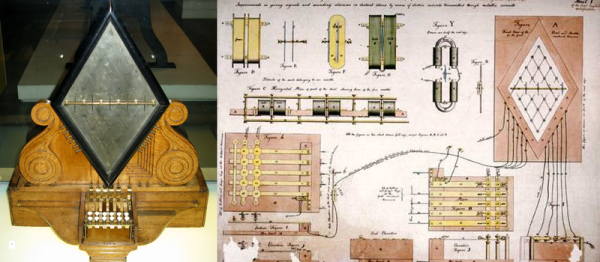We think of digital communications as a modern invention. But the reality is that semaphores, smoke signals, and Aldis lamps are all types of digital communication. While telegraphs are not as old as smoke signals, they, too, are a digital mode. The problem with all of these is that they require the operator to learn some kind of code. People don’t like to learn code because it is difficult, and employers don’t like to pay high wages to trained operators.
In the late 1830s, a man named William Cooke proposed a complex telegraph to a railway company. The company didn’t care for it and asked for something simpler. The railway didn’t like that either, so Cooke joined up with Charles Wheatstone and patented something that was a cross between a telegraph and a Ouija board.











